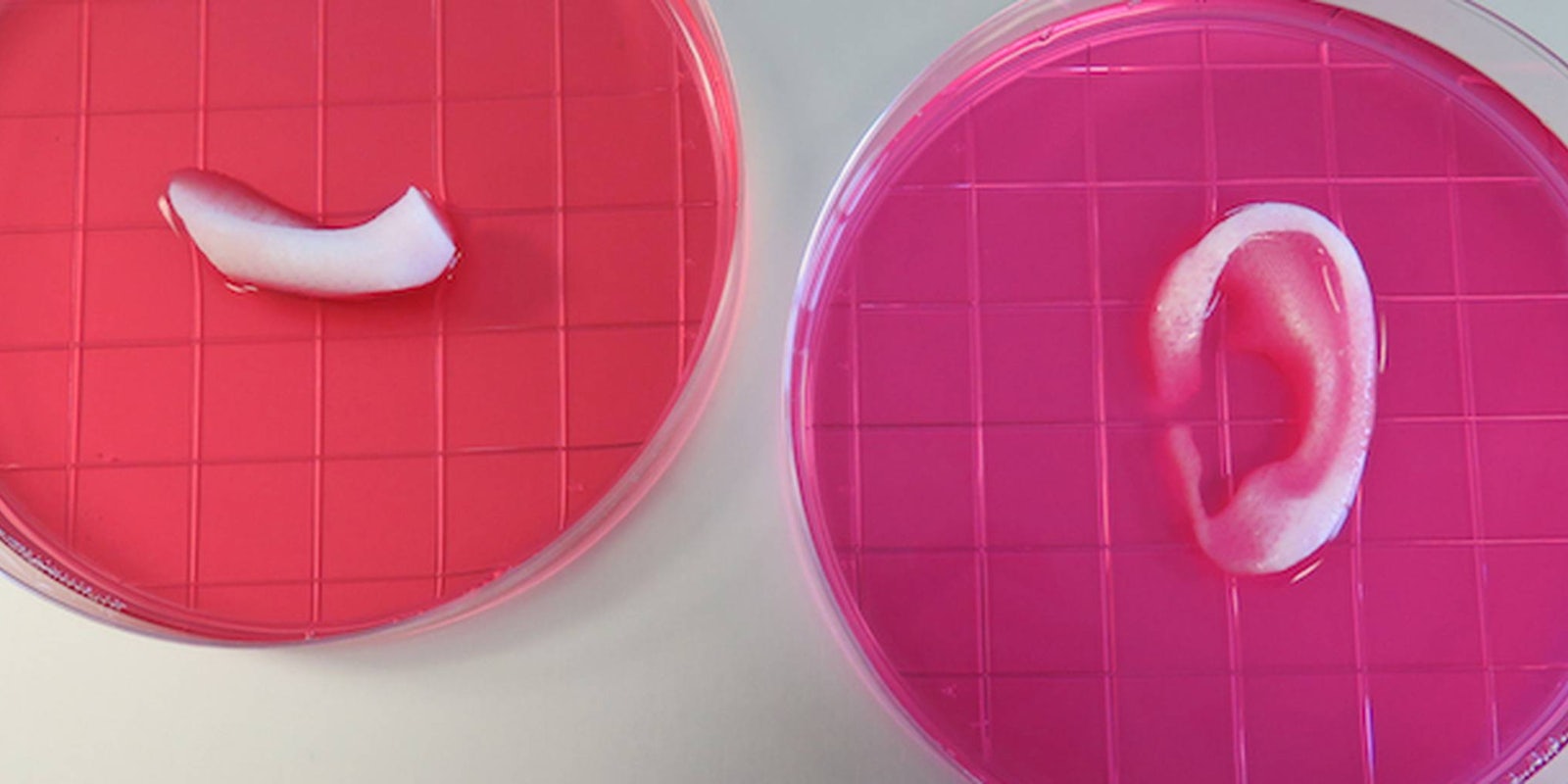In the modern medical world, to receive a skin, bone, organ, or muscle transplant, it has to be from another person. A donor has to supply you with the parts or, in the case of skin grafts, the patient themselves needs to have tissue removed. It’s a highly invasive process, but it in the near future it may become a thing of the past, and it’s all thanks to inkjet 3d printers.
Yes, the inkjet printer you grew up has inspired a possible medical breakthrough; 3D printed flesh. Researchers at Wake Forest Institute for Regenerative Medicine have created a prototype printer that uses “bioinks” to lay down layers of cells to create bone or muscle tissue. The tissue is printed with “microchannels,” pathways that allow nutrients to flow through them.
Previous attempts at creating tissue without existing blood vessels had to be smaller than 200 microns (0.007 inches) for the cells to survive. The Wake Forest printed method allows for the creation of much larger tissue samples.
Wake Forest has been able to print a human ear and jaw bone fragments using human stem cells. The jawbone fragments are reportedly the size and shape needed to be used for facial reconstruction in humans. Fragments of printed jawbone have been implanted in rats. After five months the bioprinted bone structures had formed vascularized bone tissue.
Researchers have been able to print sections of muscle, cartilage, and bone, but have yet to actually put them on and into a human body. They’ve recently begun preclinical studies to began human trials. If their research proves successful this will have dramatic implications for everyone from burn victims, people on organ transplant lists, and maybe one day even amputees. It’s possible to realistically imagine a future where doctors can print tissue directly over wounds.
Currently the printers can only create flat structures, but researchers are reportedly working on additional levels of biological complexity, including tubular structures like blood vessels and complex tissues like organs. The potential for these printers is staggering, from life saving transplants to cosmetic surgeries. At the moment it’s a possible medical miracle. One day it could be our new reality. You can read more about Wake Forest’s incredible tissue printers on the Wake Health site.
